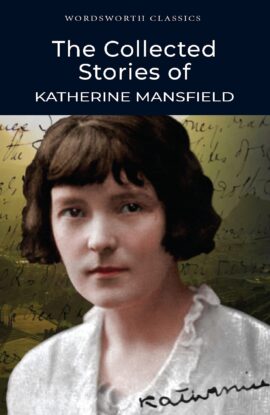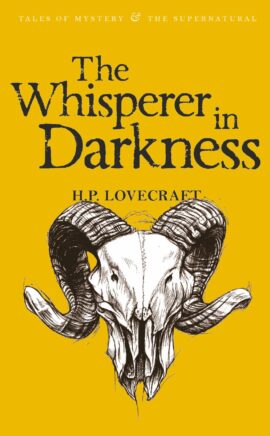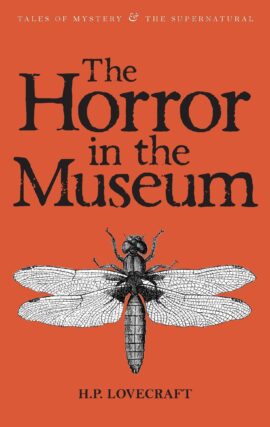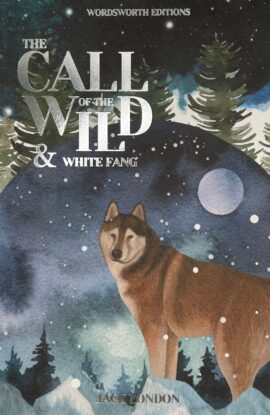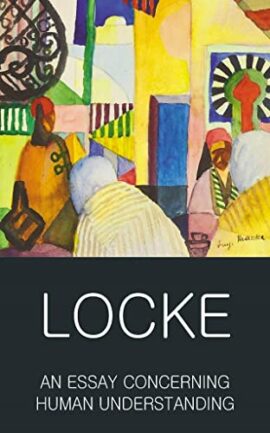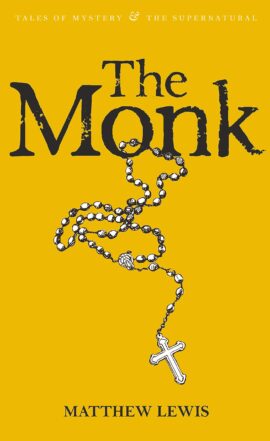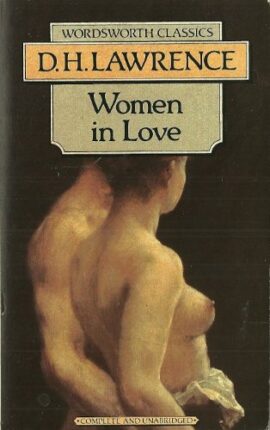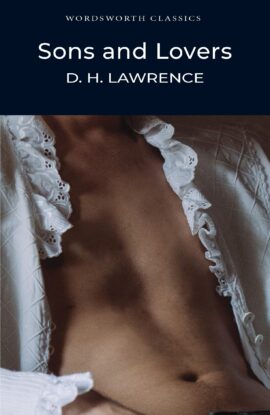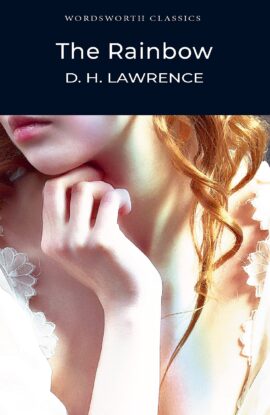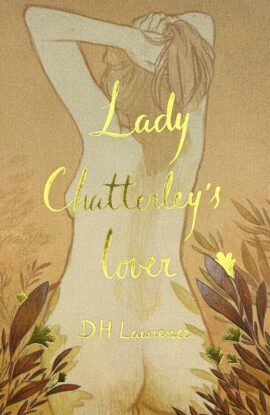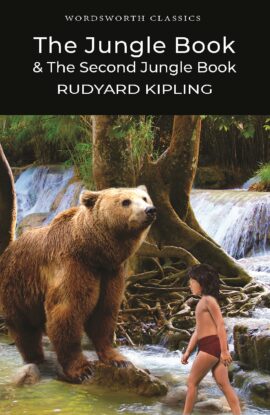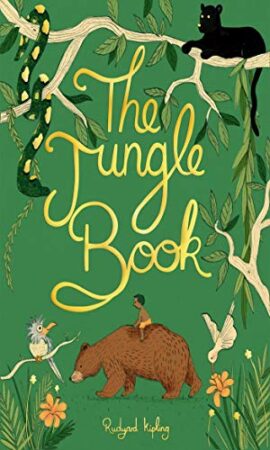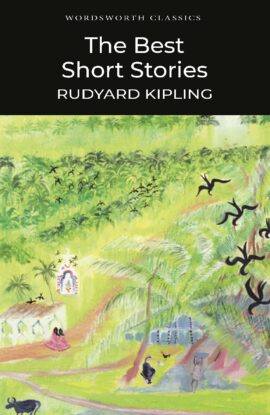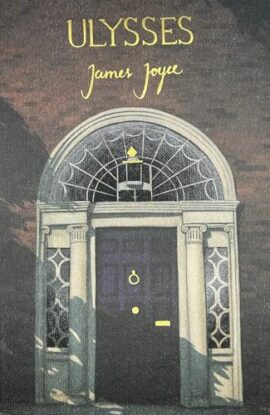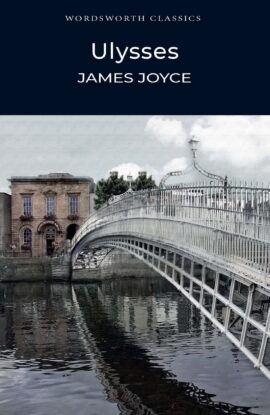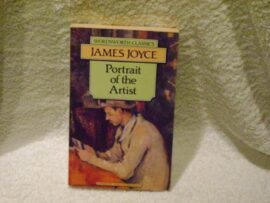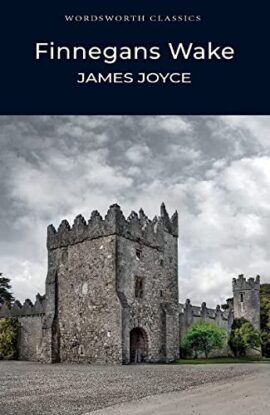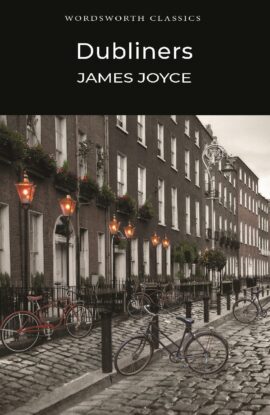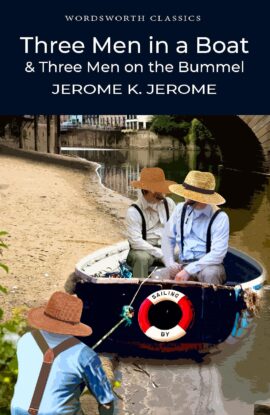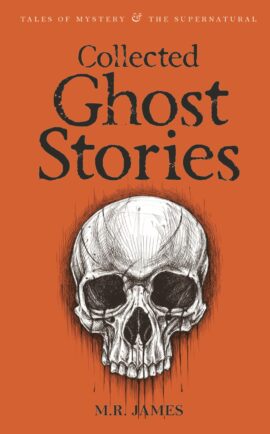Affichage de 151–175 sur 742 résultatsTrié par popularité
The Collected Stories of Katherine Mansfield (Wordsworth Classics)
With an Introduction and Notes by Professor Stephen Arkin, San Francisco State University.Katherine Mansfield is widely regarded as a writer who helped create the modern short story. Born in Wellington, New Zealand in 1888, she came to London in 1903 to attend Queen's College and returned permanently in 1908. her first book of stories, In a German Pension, appeared in 1911, and she went on to write and publish an extraordinary body of work. This edition of The Collected Stories brings together all of the stories that Mansfield had written up until her death in January of 1923.With an introduction and head-notes, this volume allows the reader to become familiar with the complete range of Mansfield's work from the early, satirical stories set in Bavaria, through the luminous recollections of her childhood in New Zealand, and through the mature, deeply felt stories of her last years. Admired by Virginia Woolf in her lifetime and by many writers since her death, Katherine Mansfield is one of the great literary artists of the twentieth century.
Jack the Ripper (Tales of Mystery & the Supernatural)
Horrific, horrendous, unspeakable, The Whitechapel Murderer, Jack the Ripper, stalked the streets of East London in 1888, slaughtering prostitutes and bewildering the police who were hunting him. They never succeeded in apprehending him, and to this day the mystery of his identity remains an enigma. But he did leave clues to his identity, and numerous theories have been entertained throughout the one hundred and twenty years since he held London's East End in his grip of terror.This book looks at the evidence left by the murderer and the reports and investigative papers which recorded the atrocities that the Ripper performed. It takes time to analyse the existing information and evaluate the letters sent to the police. It is the strongest and most powerful book ever written on the murders. It dispels a lot of myths attached to the Ripper, and eliminates a lot of the previously conjectured perpetrators, leaving only those who realistically could have been...Jack the Ripper.
The Whisperer in Darkness: Collected Short Stories Vol I (Tales of Mystery & the Supernatural)
The Whisperer in Darkness: Collected Short Stories Vol I by H.P. Lovecraft. Selected and Introduced by M.J. Elliott, That is not dead that can eternal lie And with strange aeons even death may die Millenia ago, the Old Ones ruled our planet. Since that time, they have but slumbered. But when a massive sea tremor brings the ancient stone city of R'lyeh to the surface once more, the Old Ones awaken at last. The Whisperer in Darkness brings together the original Cthulhu Mythos stories of the legendary horror writer H.P. Lovecraft. Included in this volume are several early tales, along with the classics The Call of Cthulhu, The Dunwich Horror and At the Mountains of Madness. Arm yourself with a copy of Abdul Alhazred's fabled Necronomican and prepare to face terrors beyond the wildest imaginings of all save H.P. Lovecraft.
Collected Short Stories The Horror in the Museum by Lovecraft, H. P. ( Author ) ON Jan-05-2010, Paperback
With an Introduction by M.J. Elliott. 'My eyes, perversely shaken open, gazed for an instant upon a sight which no human creature could even imagine without panic, fear and physical exhaustion...'A wax museum in London boasts a new exhibit, which no man has seen and remained sane... A businessman is trapped in a train carriage with a madman who claims to have created a new and efficient method of capital punishment... A doctor plans a horrible revenge, using as his murder weapon an insect believed capable of consuming the human soul... Within these pages, some of H P Lovecraft's more obscure works of horror and science fiction can be found, including several fantastic tales from his celebrated Cthulhu Mythos. No true Lovecraft aficionado dare be without this volume.
Haunter of the Dark
The Haunter of the DarkSelected and Introduced by M J Elliott‘They were removing the stones quietly, one by one, from the centuried wall. And then, as the breach became large enough, they came out into the laboratory in single file: led by a stalking thing with a beautiful head made of wax.’From the dark, mind-expanding imagination of H P Lovecraft, Wordsworth presents a third volume of tales penned by the greatest horror writer of the 20th Century. Here are some of Lovecraft’s weirdest flesh-creeping masterpieces, including Pickman's Model, The Shunned House, his famous serial Herbert West – Reanimator, and several classic tales from the Cthulhu Mythos, in which mankind is subjected to the unimaginable terrors known only to those who have read from the forbidden Necronomicon. Also included in this compelling collection are the complete Randolph Carter stories, chronicling his adventures in this world and the realm of his dreams, where he faces perils beyond comprehension.
Call of the Wild & White Fang
Call of the Wild and White Fang by Jack London. The Call of the Wild and White Fang are world famous animal stories. Set in Alaska during the Klondike Gold Rush of the late 1890s, The Call of the Wild is about Buck, the magnificent cross-bred offspring of a St Bernard and a Scottish Collie. Stolen from his pampered life on a Californian estate and shipped to the Klondike to work as a sledge dog, he triumphs over his circumstances and becomes the leader of a wolf pack. The story records the decivilisation of Buck as he answers the call of the wild , an inherent memory of primeval origins to which he instinctively responds. In contrast, White Fang relates the tale of a wolf born and bred in the wild which is civilized by the master he comes to trust and love. The brutal world of the Klondike miners and their dogs is brilliantly evoked and Jack London s rendering of the sentient life of Buck and White Fang as they confront their destiny is enthralling and convincing. The deeper resonance of these stories derives from the author s use of the myth of the hero who survives by strength and courage, a powerful myth that still appeals to our collective unconscious.
An Essay Concerning Human Understanding: Second Treatise of Goverment (Wordsworth Classics of World Literature) (English and German Edition)
An Essay Concerning Human Understanding: Second Treatise of Goverment (Wordsworth Classics of World Literature) by John Locke. Notes and Introduction by Mark G. Spencer, Brock University, Ontario John Locke (1632-1704) was perhaps the most influential English writer of his time. His Essay concerning Human Understanding (1690) and Two Treatises of Government (1690) weighed heavily on the history of ideas in the eighteenth century, and Locke's works are often - rightly - presented as foundations of the Age of Enlightenment. Both the Essay and the Second Treatise (by far the more influential of the Two Treatises) were widely read by Locke's contemporaries and near contemporaries. His eighteenth-century readers included philosophers, historians and political theorists, but also community and political leaders, engaged laypersons, and others eager to participate in the expanding print culture of the era. His epistemological message that the mind at birth was a blank slate, waiting to be filled, complemented his political message that human beings were free and equal and had the right to create and direct the governments under which they lived. Today, Locke continues to be an accessible author. He provides food for thought to university professors and their students, but has no less to offer the general reader who is eager to enjoy the classics of world literature.
The Monk
With an Introduction by Kathryn White.Prepare to be shocked. This novel, written in 1796, is a Gothic festival of sex, magic and ghastly, ghostly violence rarely seen in literature. The Monk is remarkably modern in style and tells a breathless tale of temptation, imprisonment and betrayal. Matthew Lewis recounts the downfall of Ambrosio, the holier-than-thou monk seduced within the walls of a Madrid abbey until he heads for the utter corruption of the soul. Meanwhile, two sets of young lovers are thwarted and the reader thrills to pursuits through the woods by bandits and is chilled by the spectre of nuns imprisoned in vermin-ridden and skeleton-crowded vaults.Late Eighteenth Century audiences were polarised in opinion as to the novel's merits. Lord Byron and the Marquis de Sade were impressed by Lewis's daring, while Coleridge warned parents against The Monk's suitability for their sons or daughters, describing the novel as 'poison for youth. If you want a novel that still terrifies, over two hundred years after it was written, there is none finer than The Monk.
Women in Love – Wordsworth Classics
Introduction and Notes by Dr Jeff Wallace, University of Glamorgan.Lawrence's finest, most mature novel initially met with disgust and incomprehension. In the love affairs of two sisters, Ursula with Rupert, and Gudrun with Gerald, critics could only see a sorry tale of sexual depravity and philosophical obscurity. Women in Love is, however, a profound response to a whole cultural crisis. The 'progress' of the modern industrialised world had led to the carnage of the First World War.What, then, did it mean to call ourselves 'human'? On what grounds could we place ourselves above and beyond the animal world? What are the definitive forms of our relationships - love, marriage, family, friendship - really worth? And how might they be otherwise? Without directly referring to the war, Women in Love explores these questions with restless energy. As a sequel to The Rainbow, the novel develops experimental techniques which made Lawrence one of the most important writers of the Modernist movement.
Sons and Lovers (Wordsworth Classics)
Introduction and Notes by Dr Howard J. Booth, University of Kent at Canterbury. 'When you have experienced Sons and Lovers you have lived through the agonies of the young Lawrence striving to win free from his old life'.Richard AldingtonThis novel is Lawrence's semi-autobiographical masterpiece in which he explores emotional conflicts through the protagonist, Paul Morel, and his suffocating relationships with a demanding mother and two very different lovers.Lawrence's novels are perhaps the most powerful exploration in the genre in English of family, class, sexuality and relationships in youth and early adulthood.
RAINBOW, THE – WWC
The Rainbow by D. H. Lawrence. With an Introduction and Notes by Lionel Kelly, University of Reading In 1915, Lawrence's frank representation of sexuality in The Rainbow caused a furore and the novel was seized by the police and banned almost as soon as it was published. Today it is recognised as one of the classic English novels of the twentieth century. The Rainbow is about three generations of the Brangwen family of Nottinghamshire from the 1840s to the early years of the twentieth century. Within this framework Lawrence s essential concern is with the passional lives of his characters as he explores the pressures that determine their lives, using a religious symbolism in which the rainbow of the title is his unifying motif. His primary focus is on the individual's struggle to growth and fulfilment within marriage and changing social circumstances, a process shown to grow more difficult through the generations. Young Ursula Brangwen, whose story is continued in Women in Love, is finally the central figure in Lawrence's anatomy of the confining structures of English social life and the impact of industrialisation and urbanisation on the human psyche.
Lady Chatterley’s Lover (Wordsworth Collector’s Edition) (Wordsworth Collector’s Editions)
Lady Chatterly's Lover by D.H. LawrenceTrapped in a marriage which has become sterile and joyless since her husband's return from the trenches of the First World War, partially paralysed and confined to a wheelchair, Connie seizes the chance of sexual fulfilment she had thought lost to her forever.First published privately in Florence in 1928, it only became a world-wide best-seller after Penguin Books had successfully resisted an attempt by the British Director of Public Prosecutions to prevent them offering an unexpurgated edition. The famous 'Lady Chatterley trial' heralded the sexual revolution of the coming decades and signalled the defeat of Establishment prudery.
India The Beautiful
The Jungle Book introduces Mowgli, the human foundling adopted by a family of wolves. It tells of the enmity between him and the tiger Shere Khan, who killed Mowgli's parents, and of the friendship between the man-cub and Bagheera, the black panther, and Baloo, the sleepy brown bear, who instructs Mowgli in the Laws of the Jungle.The Second Jungle Book contains some of the most thrilling of the Mowgli stories. It includes Red Dog, in which Mowgli forms an unlikely alliance with the python Kaa, How Fear Came and Letting in the Jungle as well as The Spring Running, which brings Mowgli to manhood and the realisation that he must leave Bagheera, Baloo and his other friends for the world of man.
Jungle Book (Wordsworth Collector’s Editions)
The Jungle Book introduces Mowgli, the human foundling adopted by a family of wolves. It tells of the enmity between him and the tiger Shere Khan, who killed Mowgli's parents, and of the friendship between the man-cub and Bagheera, the black panther, and Baloo, the sleepy brown bear, who instructs Mowgli in the Laws of the Jungle.
best_short_stories
With a new Introduction by Cedric Watts, Research Professor of English, University of Sussex.The diverse tales selected for this volume display the astonishing virtuosity of Rudyard Kipling's early writings. A Nobel prize-winner, Kipling was phenomenally productive and imaginative, displaying a literary mastery of idioms, technology and technical terms, exotic locations, and social range. He gained immense popularity, becoming (as these stories indicate) the knowledgeable spokesman for a wide public.Later, although Kipling's right-wing views increasingly incurred hostility, his creativity remained formidable. In this rich collection, we encounter bold realism, poignant nostalgia, dark comedy, the vividly horrific, the exuberantly fanciful and the disturbingly uncanny.
The Works of John Keats (Wordsworth Poetry Library)
With an Introduction by Paul Wright.'What the imagination seizes as Beauty must be truth' So wrote the Romantic poet John Keats (1795-1821) in 1817. This collection contains all of his poetry: the early work, which is often undervalued even today, the poems on which his reputation rests including the 'Odes' and the two versions of the uncompleted epic 'Hyperion', and work which only came to light after his death including his attempts at drama and comic verse.It all demonstrates the extent to which he tested his own dictum throughout his short creative life. That life spanned one of the most remarkable periods in English history in the aftermath of the French Revolution and this collection, with its detailed introductions and notes, aims to place the poems very much in their context. The collection is ample proof that Keats deservedly achieved his wish to 'be among the English Poets after my death'
Essential Kafka (Wordsworth Classics) (English and German Edition)
Essential Kafka by Franz Kafka. Like George Orwell, Franz Kafka has given his name to a world of nightmare, but in Kafka's world, it is never completely clear just what the nightmare is. The Trial, where the rules are hidden from even the highest officials, and if there is any help to be had, it will come from unexpected sources, is a chilling, blackly amusing tale that maintains, to the very end, a relentless atmosphere of disorientation. Superficially about bureaucracy, it is in the last resort a description of the absurdity of 'normal' human nature. Still more enigmatic is The Castle. Is it an allegory of a quasi-feudal system giving way to a new freedom for the subject? The search by a central European Jew for acceptance into a dominant culture? A spiritual quest for grace or salvation? An individual's struggle between his sense of independence and his need for approval? Is it all of these things? And K? Is he opportunist, victim, or an outsider battling against elusive authority? Finally, in his fables, Kafka deals in dark and quirkily humorous terms with the insoluble dilemmas of a world which offers no reassurance, and no reliable guidance to resolving our existential and emotional uncertainties and anxieties.
Ulysses (Wordsworth Collector’s Editions)
Ulysses by James Joyce tells of the diverse events which befall Leopold Bloom and Stephen Dedalus in Dublin on 16 June 1904, during which Bloom's voluptuous wife, Molly, commits adultery.Initially deemed obscene in England and the USA, this richly allusive novel, revolutionary in its Modernistic experimentalism, was hailed as a work of genius by W. B. Yeats, T. S. Eliot and Ernest Hemingway.Scandalously frank, wittily erudite, mercurially eloquent, resourcefully comic and generously humane, Ulysses offers the reader a life-changing experience.
Ulysses (Wordsworth Classics)
Ulysses by James Joyce COMPLETE AND UNABRIDGED. With a new Introduction by Cedric Watts, Research Professor of English, University of Sussex. James Joyces astonishing masterpiece, Ulysses, tells of the diverse events which befall Leopold Bloom and Stephen Dedalus in Dublin on 16 June 1904, during which Blooms voluptuous wife, Molly, commits adultery. Initially deemed obscene in England and the USA, this richly-allusive novel, revolutionary in its Modernistic experimentalism, was hailed as a work of genius by W. B. Yeats, T. S. Eliot and Ernest Hemingway. Scandalously frank, wittily erudite, mercurially eloquent, resourcefully comic and generously humane, Ulysses offers the reader a life-changing experience.
Portrait of an Artist As a Young Man
Portrait of the Artist As a Young Man by James Joyce with an Introduction and Notes by Dr. Jacqueline Belanger, University of Cardiff A Portrait of the Artist as a Young Man represents the transitional stage between the realism of Joyce's Dubliners and the symbolism of Ulysses, and is essential to the understanding of the later work. This novel is a highly autobiographical account of the adolescence of Stephen Dedalus, who reappears in Ulysses, and who comes to realize that before he can become a true artist, he must rid himself of the stultifying effects of the religion, politics and essential bigotry of his background in late 19th century Ireland.
Finnegans Wake (Wordsworth Classics)
Finnegans Wake is the book of Here Comes Everybody and Anna Livia Plurabelle and their family - their book, but in a curious way the book of us all as well as all our books. Joyce's last great work, it is not comprised of many borrowed styles, like Ulysses, but, rather, formulated as one dense, tongue-twisting soundscape. This 'language' is based on English vocabulary and syntax but, at the same time, self-consciously designed to function as a pun machine with an astonishing capacity for resisting singularity of meaning. Announcing a 'revolution of the word', this astonishing book amounts to a powerfully resonant cultural critique - a unique kind of miscommunication which, far from stabilizing the world in meaning, constructs a universe radically unfixed by a wild diversity of possibilities and potentials. It also remains the most hilarious, 'obscene', book of innuendos ever to be imagined.
Dubliners
"Dubliners" was completed in 1905, but a series of British and Irish publishers and printers found it offensive and immoral, and it was suppressed. The book finally came out in London in 1914, just as Joyce's "Portrait of the Artist as a Young Man" began to appear in the journal "Egoist" under the auspices of Ezra Pound. The first three stories in "Dubliners" might be incidents from a draft of "Portrait of the Artist," and many of the characters who figure in "Ulysses" have their first appearance here, but this is not a book of interest only because of its relationship to Joyce's life and mature work. It is one of the greatest story collections in the English language--an unflinching, brilliant, often tragic portrait of early twentieth-century Dublin. The book, which begins and ends with a death, moves from "stories of my childhood" through tales of public life. Its larger purpose, Joyce said, was as a moral history of Ireland.
THREE MEN IN A BOAT & THREE MEN ON THE BUMMEL – WWC
Three Men in a Boat There are four of them - George, Harris, the writer himself and that dog, Montmorency - all participants in a boating expedition on the Thames. The difficulties and vicissitudes heaped upon these innocents develop to epic proportions as they experience the hazards of the great English waterway. Their problems are in no way diminished by the outrageous behaviour of Montmorency, who lays waste several riverside communities in the course of their journey. Three Men on the Bummel 'What is a bummel?' said George. 'How would you translate it?' 'A bummel,' I explained, 'I should describe as a journey, long or short, without an end: the only thing regulating it being the necessity of getting back within a given time to the point from which one started . . . ' After considerable indecision the bummel takes our heroes to Germany's Black Forest where they manage to disrupt the tranquil way of life usually enjoyed by the denizens, whose curious behaviour they closely observe and record in their account of this second epic journey. Even without that dog, chaos and mayhem reign supreme.
Collected Ghost Stories
Collected Ghost Stories by M. R. James. M.R. James is probably the finest ghost-story writer England has ever produced. These tales are not only classics of their genre, but are also superb examples of beautifully-paced understatement, convincing background and chilling terror. As well as the preface, there is a fascinating tail-piece by M.R. James, Stories I Have Tried To Write , which accompanies these thirty tales. Among them are 'Casting the Runes', 'Oh, Whistle and I'll come to you, My Lad', 'The Tractate Middoth', 'The Ash Tree' and 'Canon Alberic's Scrapbook'. There are some authors one wishes one had never read in order to have the joy of reading them for the first time. For me, M.R. James is one of these . Ruth Rendall
Turn of the Screw & the Aspern Papers (Wordsworth Classics)
With an Introduction and Notes by Dr Claire Seymour, University of Kent at Canterbury.The Turn of the Screw is the classic ghost story for which James is most remembered. Set in a country house, it is a chilling tale of the supernatural told by a master of the genre.The Aspern Papers is a tale of Americans in Europe, a theme in which Henry James is at his most assured and accomplished. The author cleverly evokes the drama of comédie humaine against the settings of a Venetian palace.

